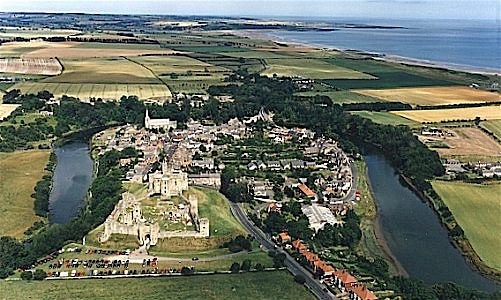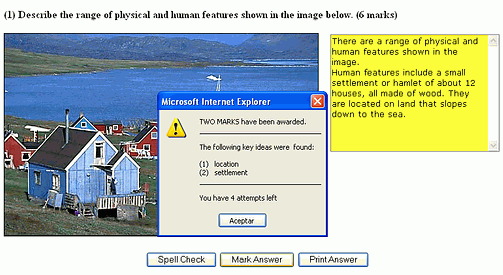Describing Places
A good description of a 'place' helps to explain what makes it so different from
other 'places' and can give a good guide as to where it is located. A
description can be divided into two parts: the Physical features and the Human
features.
Physical features are those things that occur naturally, such as
mountains, rivers, soil, wildlife, climate etc..
Human features are those that involve people, such as roads, houses, farm
land, jobs or occupations and industry. Note that much of the countryside of
Britain has been changed by people, ever since the Romans began cutting down the
forests to farm the land about 2,000 years ago.
When describing places, such as in the image below, it is not enough to simply
say 'there are houses'. Appropriate vocabulary should be used to give an
indication of how many houses there are, what the houses are built of, and
whether many people live there, or just a few.
 |
| Click on image to see description examples |
Some of this 'appropriate' vocabulary can be summarised as follows:
| Physical Features | Human Features | ||
|---|---|---|---|
| Feature | Meaning | Feature | Meaning |
| Relief | Shape of the land e.g. mountainous, flat, steep, sloping | Settlement and population | The most common settlement sizes are (from small to large): hamlet, village, town, city |
| Landforms | e.g. mountain, valley, cliff, beach, bay, plain, river meander | Houses | Their density, building material, and if they are detached, semi-detached or terraced |
| Drainage | e.g. rivers , streams or ditches | Land Use | e.g. urban or rural, residential or industrial, farm land or forest |
| Soil | e.g. fertile or infertile | Occupations | How people make their living |
| Climate | e.g. warm, wet, tropical, polar | Transport and communication | Roads, railways, port |
Click on the image above to see a few of things that you could include in your description!
An example of a partly completed computer marked test (Describing Places 1) is shown in the image below.

|
